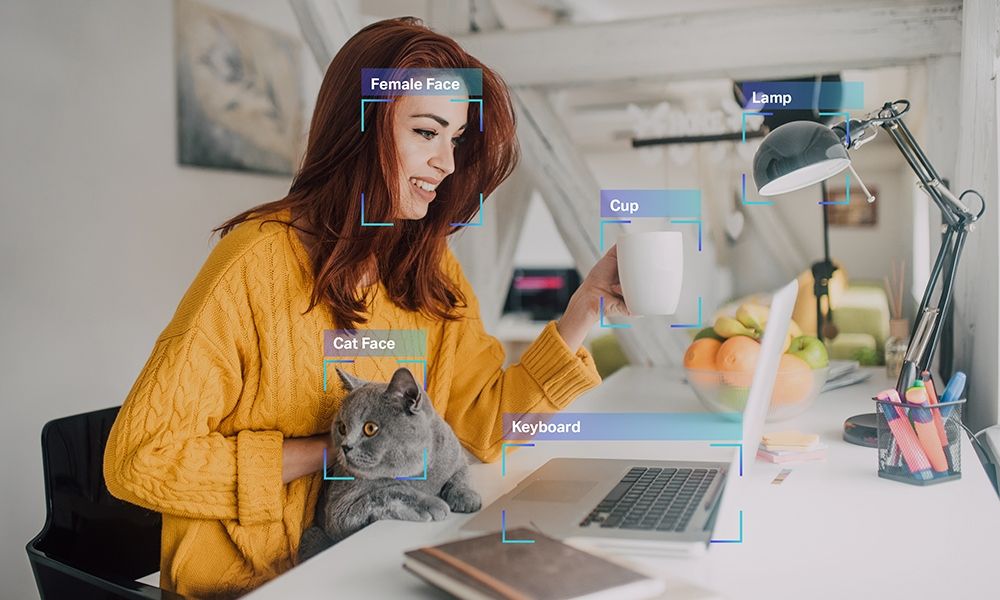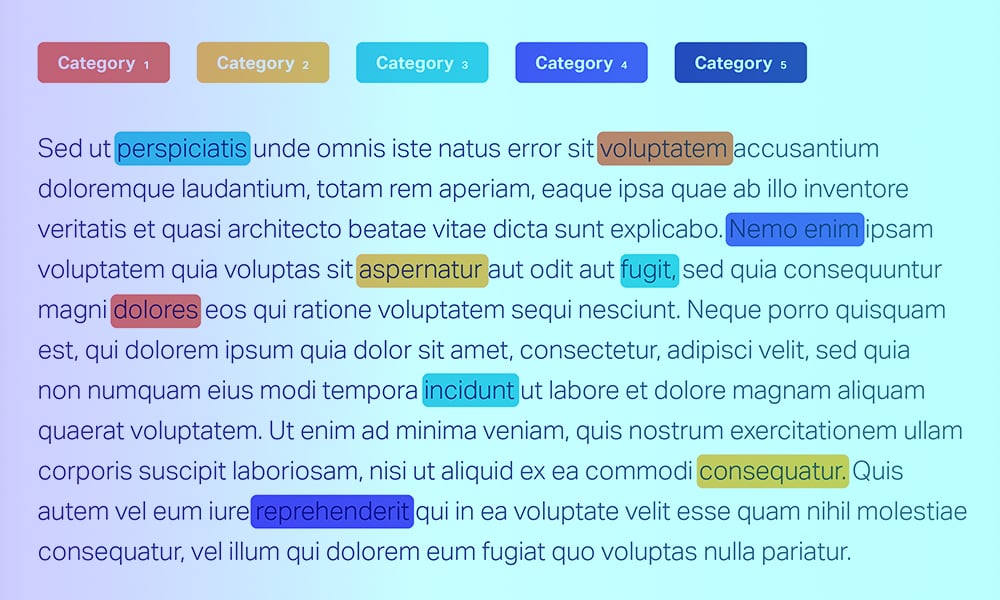In our digital world, businesses process tons of data daily. Data keeps the organization running and helps it make better-informed decisions. Businesses are flooded with documents, from employees creating new ones to documents entering the organization from various sources such as emails, portals, invoices, receipts, applications, proposals, claims, and more.
Unless someone reviews these documents, there is no way to know what a particular document is about or the best way to process it. However, manually processing each document to know where and how it should be stored is difficult.
Let us explore document classification, understand why document classification is crucial for a business, and study how Computer Vision, Natural Language Processing, and Optical Character Recognition play a part in Document Classification or Document Processing.
What is Document Classification?
Manual document classification tasks can be a huge bottleneck for many businesses as they are time-consuming, error-prone, and resource-consuming. When automatic classification models based on NLP and ML are used, the text in a document is identified, tagged, and categorized automatically.
Document classification tasks are generally based on two classifications: text and visual. Text classification is based on the content’s genre, theme, or type. Natural Language Processing is used to understand the text’s concept, emotions, and context. Visual classification is done based on the visual structural elements present in the document using Computer Vision and image recognition systems.
Why do businesses require Document Classification?

Every business, large and small, has to deal with documentation to manage its everyday operations. Since it is impossible to process each document manually, it is necessary to employ an automatic document classification system. The document classification system allows businesses to organize content and make it available anytime.
Document classification has several use cases in various industries, from hospitals to businesses.
- It helps businesses automate document management and processing.
- Document classification is a mundane and repetitive task, automating the process reduces processing errors and improves the turnaround time.
- Automation of documents also improves efficiency, reliability, and scalability.
Document Classification Vs. Text Classification
Text classification and document classification are sometimes used interchangeably. Although there is a very slight difference between the two, it is important to know how they differ.
Text classification is about employing techniques to analyze text in text-based documents. The text can be classified at various levels, such as
| Sentence Level | Sub-sentence Level |
|---|---|
| The text classification is based on the information in a single sentence. | The sub-sentence level draws sub-expressions from within sentences. |
| Paragraph Level | Document Level |
|---|---|
| Extracts the core or most critical information from a single paragraph. | Draw important information from the entire document. |
Text classification is a subset of document classification that deals entirely with classifying the text in any given document. While text classification deals only with the text, document classification is both textual and visual. In text classification, only the text is used to classify, whereas, in document classification, the complete document can be used for context.
How does Document Classification work?
Document classification can be done using two methods: manual and automatic. In manual classification, a human user must review documents, find relationships between concepts, and categorize accordingly. In automatic document classification, machine learning and deep learning techniques are used. Let’s unravel document classification methods by understanding the different types of documents a business processes.
Structured Documents
A document contains well-formatted data with consistent numbering and fonts. The layout of the document is also consistent and doesn’t have deviations. Building classification tools for such structured documents is easy and predictable.
Unstructured Documents
An unstructured document has contents presented in a non-structured or open format. Examples include letters, contracts, and orders. Since they are inconsistent, it becomes challenging to locate critical information.

Document Classification Techniques?
Automatic document classification uses Machine Learning and Natural Language Processing techniques to simplify, automate, and speed up the categorization process. Machine learning makes document classification less cumbersome, faster, more accurate, scalable, and unbiased.
Document classification can be done using three techniques. They are
Rule-Based Technique
The rule-based technique is based on linguistic patterns and rules that provide instructions to the model. The models are trained to identify language patterns, morphology, syntax, semantics, and more to tag the text. This technique can be constantly improved, new rules added and improvised to extract accurate insights. However, this technique can be time-consuming, unscalable, and complex.
Supervised Learning
A set of tags is defined in supervised learning, and several texts are manually tagged so that the machine learning system can learn to make accurate predictions. The algorithm is manually trained on a set of tagged documents. The more data you feed into the system, the better the outcome. For example, if the text says, ‘The service was affordable,’ the tag should be under ‘pricing.’ Once the model’s training is complete, it can automatically predict unseen documents.
Unsupervised Learning
In unsupervised learning, similar documents are grouped into different clusters. This learning does not necessitate any prior knowledge. The documents are categorized based on fonts, themes, templates, and more. If the rules are pre-defined, tweaked, and perfected, this model can deliver classification with accuracy.
Document Classification Process
Building an automated document classification algorithm involves deep learning and machine learning workflows.

Step 1: Data Collection
Data Collection is perhaps the most crucial step in training document classification algorithms. It is necessary to gather documents from various categories so that the algorithm can learn how to classify them.
For instance, if your model is required to classify into five different categories, you must have a dataset containing a minimum of 300 documents per category.
Also, ensure the dataset you are using for the training is correctly tagged. If the dataset is incorrect, the model you build will be riddled with issues.
Step 2: Parameter Determination
Before training the model, you must determine the parameters to train the machine learning models. The metrics you define at this stage can be modified to make the model more accurate and reliable in its predictions.
Step 3: Model Training
After setting the parameters, the model has to be trained. If you are just getting started with model development, you can try using open-source datasets for training and testing purposes.
If the model typically works with a machine learning algorithm, you can import the model or perform coding based on the algorithm’s logic.
Step 4: Model Evaluation
Evaluating the model after the training is essential to enhance its effectiveness and accuracy. Begin by dividing the dataset into two broad sections, one for training and the other for testing. Use 70% of the dataset for training the model, and the rest, 30%, for testing and evaluation.
Real-life use cases
Document classification is being used to address several business problems. Although most use cases are not classification tasks, the algorithm finds itself employed to solve several real-life problems.
Spam Detection
Document classification, particularly text classification, is used to detect unwanted spam. The model is trained to detect spam phrases and their frequency to determine if the message is spam. For example, Google’s Gmail Spam detector uses the Natural Language Processing technique to detect frequently occurring words in junk messages and drop the mail in the correct folder.
Sentiment Analysis
Sentiment analysis through social listening helps businesses understand their customers, their opinions, and their reviews. By classifying reviews, feedback, and complaints and categorizing them based on their emotional nature, the NLP-based models help in sentiment analysis. The model is trained to extract words that denote or have positive or negative connotations.
Ticket or Priority Classification
Any business’s customer service department comes across many service requests and tickets. An automated document classification tool can help wade through the massive volume of tickets. Using NLP, priority tickets can be routed to the correct department. This significantly improves the speed of resolution, processing, and servicing.
Object Recognition
Automated document classification is also used to process large amounts of visual data in documents by classifying them according to categories. Object recognition is typically used in eCommerce or manufacturing units to classify products.
Getting Started with Document Classification Powered by AI
Documents contain data critical to the business’s functioning. The documents contain valuable insights that further the operations, services, and growth goals of an organization.
However, classifying documents is a tedious yet necessary task. Since document classification is a challenge, especially if the volume is relatively high, it is necessary to have an automated document classification system.
An AI-based document classification model trained by machine learning algorithms is efficient, cost-effective, error-free, and accurate. But the process can kick off only when the model you are building is trained on quality and accurately tagged datasets.
Shaip brings to you pre-tagged datasets that aid in developing accurate classification models. Get in touch with us and get started with your document classification tool right away.







